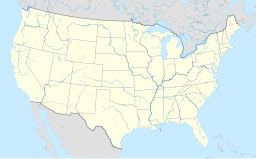Rutland (city), Vermont
| City of Rutland | ||
| City | ||
|
Downtown Historic District
|
||
|
||
| Nickname: Marble City, Gateway to Southern Vermont, Rutvegas | ||
| Country | United States | |
|---|---|---|
| State | Vermont | |
| County | Rutland | |
| Elevation | 541 ft (165 m) | |
| Coordinates | 43°36′32″N 72°58′47″W / 43.60889°N 72.97972°WCoordinates: 43°36′32″N 72°58′47″W / 43.60889°N 72.97972°W | |
| Area | 7.68 sq mi (19.89 km2) | |
| - land | 7.64 sq mi (20 km2) | |
| - water | 0.04 sq mi (0 km2), 0.52% | |
| Population | 16,495 (2010) | |
| Density | 2,147.8/sq mi (829.3/km2) | |
| Incorporated | 1892 | |
| Government | ||
| - coordinates | 42°46′28″N 73°41′59″W / 42.77444°N 73.69972°W | |
| Mayor | Christopher C. Louras (I) | |
| Timezone | EST (UTC-5) | |
| - summer (DST) | EDT (UTC-4) | |
| ZIP codes | 05701, 05702 | |
| Area code | 802 | |
|
Rutland City, Vermont
|
||
|
Location of Vermont in the United States
|
||
| Website: http://www.rutlandcity.org/ | ||
The city of Rutland is the county seat of Rutland County, Vermont, in the United States. As of the 2010 census, the city had a total population of 16,495. Rutland is located approximately 65 miles (105 km) north of the Massachusetts state line and 20 miles (32 km) east of the state of New York. Rutland is the third largest city in Vermont, after Burlington and South Burlington. It is surrounded by the town of Rutland, which is a separate municipality. The downtown area of the city is listed as an historic district on the National Register of Historic Places.
It began on Otter Creek in the early 19th century as a small hamlet called Mill Village in Rutland, the surrounding town named by Governor Benning Wentworth in 1761 after John Manners, 3rd Duke of Rutland. In the early 19th century, small high-quality marble deposits were discovered in Rutland, and in the 1830s a large deposit of nearly solid marble was found in what is now West Rutland. By the 1840s, small firms had begun excavations, but marble quarries proved profitable only after the railroad arrived in 1851. At the same time, the famous quarries of Carrara in Tuscany, Italy, grew largely unworkable because of their extreme depth, allowing Rutland to become one of the world's leading marble producers.
...
Wikipedia





